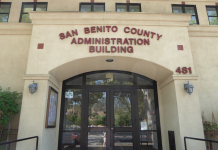By issuing its monumental $35 million bond now, while interest
rates are at historically low levels, the Redevelopment Agency has
saved at least $500,000, according to a city finance official.
Hollister recently reaped its net proceeds from the bond sale
that hit the market during August. With the current economic
stagnation in California, the city’s bonds were priced with
interest rates ranging from 3 percent and 5.125 percent, according
to a City Council staff report.
By issuing its monumental $35 million bond now, while interest rates are at historically low levels, the Redevelopment Agency has saved at least $500,000, according to a city finance official.
Hollister recently reaped its net proceeds from the bond sale that hit the market during August. With the current economic stagnation in California, the city’s bonds were priced with interest rates ranging from 3 percent and 5.125 percent, according to a City Council staff report.
That equates to at least a half-million-dollar savings not only because the city will pay back its entire debt at historically low rates, but the RDA also refinanced two existing bond debts that were left over from 1991, according to Finance Director Barbara Mulholland. Those two bonds’ terms had been scheduled to last until 2021 and 2022, respectively.
“It’s significant, basically,” said Eileen Gallagher, vice president of public finance at Stone and Youngberg, the San Francisco-based underwriting firm hired by Hollister to conduct the sale. “It (low interest rates) could have a very significant effect when talking about the cost of funds.”
The Hollister City Council approved the $35 million bond issuance June 16 for an immediate financial boost to the RDA, which exists to remedy the city’s blight issues and improve the image of downtown.
The money has been earmarked for several significant infrastructural projects during the next decade. They include sewer plant upgrades, Highway 25 improvements and construction of Fire Station No. 2.
The city – after transferring $3.4 million for its two existing debts, buying bond insurance and writing a check to Stone and Youngberg – netted nearly $29 million on the deal, according to Mulholland.
Hollister officials, aside from the opportune timing of the bond issuance and a need to finance those projects, pursued it for another reason, too. The state requires redevelopment agencies to function in debt.
“I think it was a combination of all three,” said RDA Director Bill Avera. “There was the existing debt, with the interest rates being so low and the commitment to these projects.”
Interest rates generally run conversely to the state of the economy, which Gallagher called “macro-forces.” With the financial world struggling in recent times, the Federal Reserve Board has lowered interest rates 11 times in the past couple years, she said.
The rates awarded the Hollister RDA aren’t fixed, Mulholland said. They are staggered, which means they will start at 3 percent and gradually rise to 5.125 percent by 2032. The two bonds priced in 1991 would have carried a 7.5 percent interest rate this year if the city had not approved the issuance.
The RDA pays off existing debts through annual tax increments. While interest rates, over the 30-year term, will cost the city $32.2 million.









